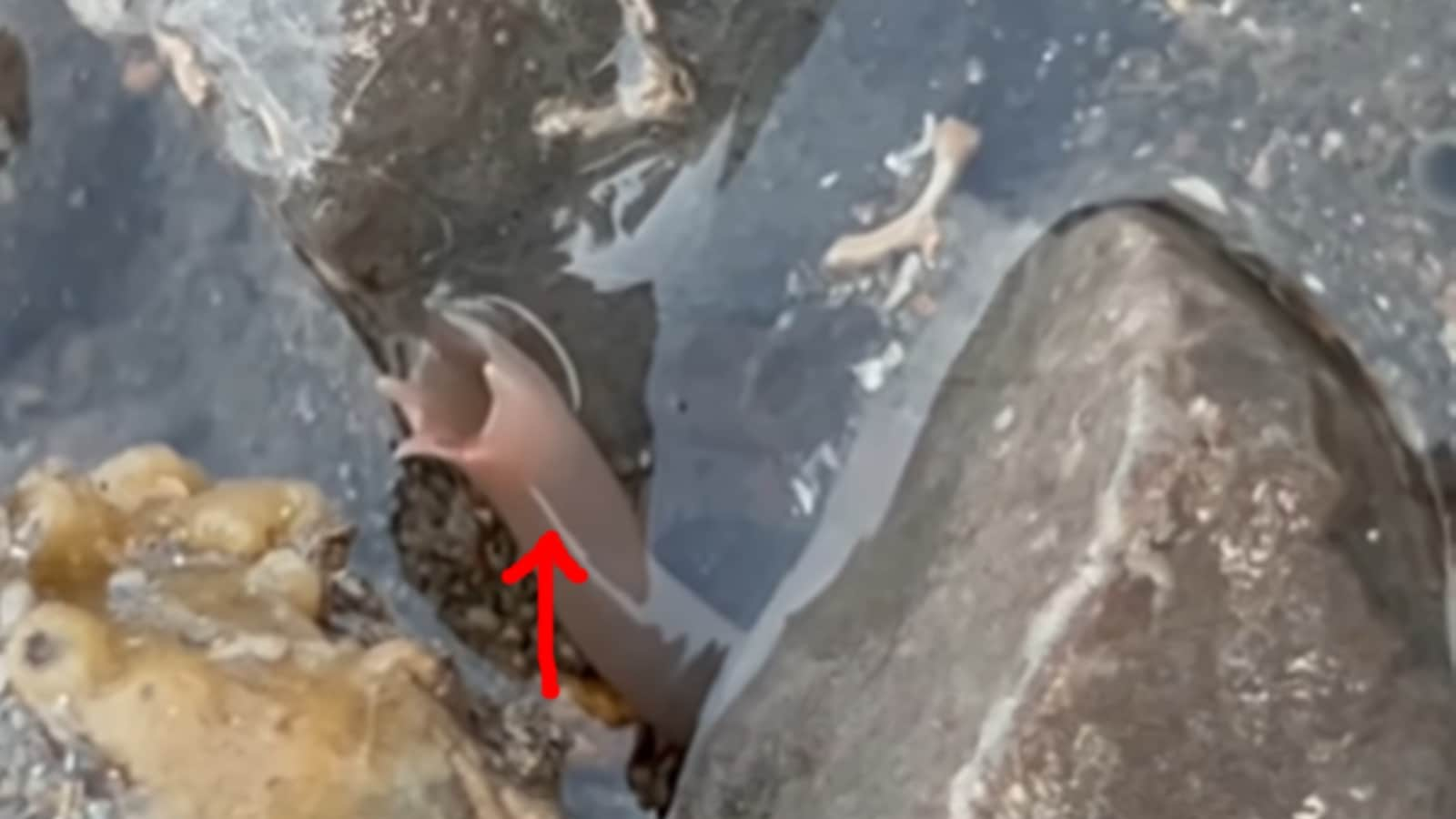📣 For more lifestyle news, click here to join our WhatsApp Channel and also follow us on Instagram
This animal squirts, and it is found on Mumbai’s Juhu Beach
These creatures, which include clams, mussels, and oysters, are well known for their squirting ability.
 Ever wondered why water squirts from the sand at Juhu Beach? Meet bivalves, the clams and shellfish that filter, burrow, and even escape using jet propulsion!
(Source: Wikimedia Commons)
Ever wondered why water squirts from the sand at Juhu Beach? Meet bivalves, the clams and shellfish that filter, burrow, and even escape using jet propulsion!
(Source: Wikimedia Commons)If you’ve ever walked along Juhu Beach in Mumbai, you might have noticed tiny jets of water shooting up from the wet sand. No, it’s not the ocean playing tricks on you—it’s actually bivalves, a fascinating group of shellfish that live beneath the surface.
These creatures, which include clams, mussels, and oysters, are well known for their squirting ability. But why do they do this, and why are they commonly found on Juhu Beach?
What are bivalves?
Bivalves are a type of mollusc with two hinged shells, and they thrive in both freshwater and marine environments. Some of the most well-known bivalves include:
- Clams – Often found buried in the sand, these little guys filter seawater for food.
- Scallops – Unlike clams, scallops can move by rapidly squirting water to propel themselves forward.
- Mussels & Oysters – These species prefer to attach themselves to rocks or other hard surfaces, filtering water as they feed.
 Juhu Beach is a prime habitat for bivalves due to its sandy shoreline and tidal movements. (Source: Sahir Doshi/Instagram)
Juhu Beach is a prime habitat for bivalves due to its sandy shoreline and tidal movements. (Source: Sahir Doshi/Instagram)
Why do bivalves squirt water?
If you’ve ever stepped on wet sand and seen water shoot up, that’s likely because of bivalves! They squirt water for a few key reasons:
- Breathing & Feeding – Bivalves suck in seawater through a siphon, filter out plankton and nutrients, and then squirt out the excess water.
- Digging & Burrowing – Clams, in particular, squirt water to loosen the sand, helping them burrow deeper for protection.
- Escape from Predators – Scallops use jet propulsion to squirt water and dart away from dangers like starfish and crabs.
- Expelling Waste – Like all living creatures, bivalves need to get rid of waste, and one way they do this is by forcefully expelling water.
Juhu Beach, and the other beaches around the world, is a prime habitat for bivalves due to its sandy shoreline and tidal movements. During low tide, locals and visitors sometimes spot clams and other bivalves washed up on the shore or see little water jets from the sand—evidence that these creatures are alive and well beneath their feet!
View this post on Instagram
Why bivalves matter
Beyond their quirky squirting habit, bivalves play a vital role in maintaining ocean health:
- They act as natural water filters, cleaning up debris and excess nutrients.
- They are a crucial part of the food chain, serving as prey for fish, crabs, and birds.
- They support local fisheries, as clams, oysters, and mussels are harvested for food.
The next time you visit Juhu Beach, keep an eye out for those little spurts of water—it’s nature’s way of showing you that the beach is full of life beneath the surface. Bivalves may seem small and simple, but their squirting abilities and survival skills make them some of the ocean’s most fascinating creatures.
📣 For more lifestyle news, click here to join our WhatsApp Channel and also follow us on Instagram



- 01
- 02
- 03
- 04
- 05























